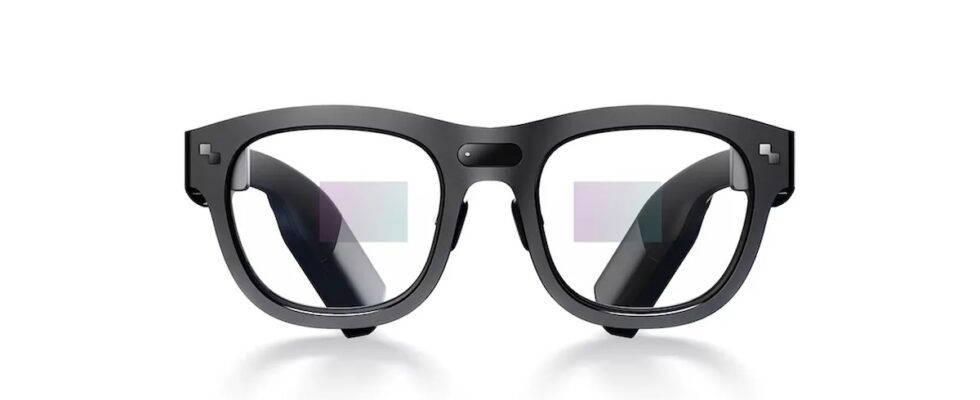The RayNeo X2s are like Google Glass for both eyes. Picture: TCL.
Chances are you know TCL for its consumer electronics or for its smartphones and other mobile devices. Against all odds, this company associated with consumer categories showed off one of the most ambitious virtual reality and augmented reality technology projects we’ve seen at this year’s CES.

You might even mistake NXTWEAR S for a regular pair of sunglasses…if you squint. Picture: TCL.
Of the three new offerings TCL presented at the show, the NXTWear S glasses are the most mundane. They can’t really be called an augmented or virtual reality device, but they offer their wearers a head-mounted display capable of displaying a virtual screen with an apparent size of three meters.
They are similar to offers already on the market like the Nreal Air glasses. Although the Nreal Airs offer some basic augmented reality features, they have mostly carved out a niche among mobile device owners, especially fans of handheld consoles like Valve’s Steam Deck, used to transform a gaming experience. on the small screen into a big screen experience.
NXTWear S glasses connect to mobile devices
NXTWear S glasses can connect to your smartphone, tablet or laptop and act as a large screen television that adapts to your face. TCL showed off the glasses used with Nintendo’s Switch in the press photo above, though it’s not entirely clear how support will be handled in cases like this.

Unlike the first version, the RayNeo X2 glasses integrate a lot more processing and sensors in order to provide advanced AR functionality. Picture: TCL.
The NXTWear S glasses are about to be delivered, but the other two products presented are not ready for primetime yet. The RayNeoX2 augmented reality glasses are based on Qualcomm’s Snapdragon XR2 (Extended Reality 2) core, a chipset designed to bring advanced technologies such as 5G connectivity and 8K video to virtual reality and augmented reality devices.
The glasses use this processing power to provide video output through a Micro LED optical waveguide that suspends the video from the device into the user’s field of vision. TCL suggests the glasses can be used for applications such as live text translation and navigation services.
The company has been much more vague about its specific plans for the RayNeoX2s, offering no pricing and just saying they will be available at a later date.
The latest surprise: the NXTWear V helmet
The latest surprise from TCL is the most conceptual: the NXTWear V headset. This device, still mysterious, seems to be a direct competitor to the Meta Quest Pro. It weighs only 236 grams and offers a pixel density of 1,512 ppi for a display that should leave behind the dreaded “screen door effect” of old VR headsets. It also includes a 108 degree field of view for solid immersion.
TCL did not specify its plans for the commercialization of the NXTWear V headset. However, if the company’s first tests in the field of augmented reality and virtual reality prove successful, it is very likely that its technology will soon to be offered to the public, albeit in slightly different packaging.
Other CES 2023 announcements
Source: ZDNet.com
